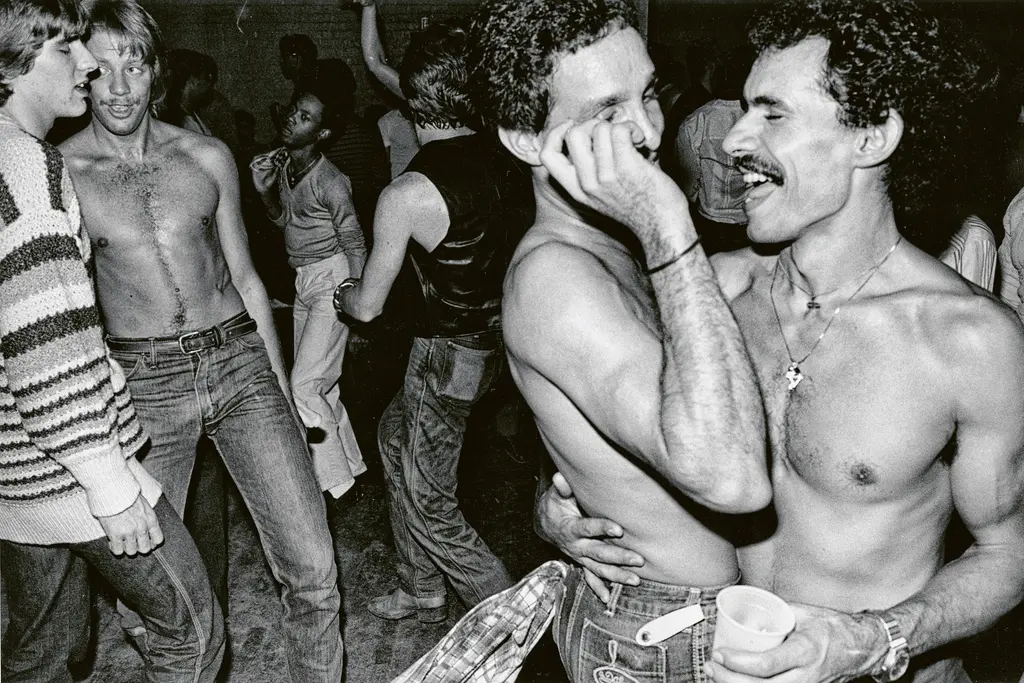An unflinching portrait of 1980s Birmingham
- Text by Miss Rosen
- Photography by Richard Davis, courtesy of Café Royal Books

In 1984, at the age of 18, Richard Davis left home and moved into a shared house in the Moseley District of Birmingham. “It felt a good fit for me – alternative, full of young people and open-minded,” he says.
“I remember someone in the house telling me about a centre for the unemployed run by the Birmingham Trades Council, which was located within walking distance of our house in Sparkhill – an inner-city neighbourhood with a large Asian and Irish population.”
At the centre, Davis discovered a darkroom and making photographs, an expensive practice made possible by the generous supply of free film, paper, and chemicals. “Its staff offered nothing but encouragement and support. They would often send me out onto the streets of Birmingham armed with a camera and tell me not to come back until I had a decent set of photos,” he says.


“This really made me aware of my everyday surroundings and helped me create a lifelong love of the light, the architecture, the people, and how everything interacts together. I would then spend the next few days developing and printing my films in their darkroom. This was the education I’d craved but never found at school from a few years before. There was no turning back.”
Over the next four years, Davis would traverse the city making photographs, which have just been published in Tales From The Second Cities Birmingham 1985–1988 (Café Royal Books).
Inspired by the photographs coming out of the 1984-85 Miners Strike along with the works of Gordon Parks and Don McCullin as well as filmmakers Jim Jarmusch and Wim Wenders, Davis set forth to document the local working-class neighbourhoods.
“As an 18-year-old, seeing how communities came together to support the strikers helped me understand politics and class issues, and how powerful solidarity could be. Photography played an important role in highlighting injustices for the working classes who normally were just ignored,” Davis says.


“From the beginning, the Centre staff helped me learn how a photographer could help. They sent me to a run-down house where an Asian family with young children lived in very poor, unhealthy conditions. My photographs were published in the papers and the family’s problems were finally dealt with. Things like this were a lesson in the power of photography.”
It was a lesson Davis took with him when he left Birmingham at the age of 22 to teach photography at Manchester Polytechnic and continue his journey through photography there.
“The book has made me quite nostalgic for my old life in Birmingham and in particular for Sparkhill. I was young and all of a sudden I had this new world opening up in front of me. Various family members still live in Birmingham so I return from time to time but never for long. The City Centre is unrecognisable from the 1980s. Everything is glass. Birmingham doesn’t feel like home anymore.”

Tales From The Second Cities Birmingham 1985–1988 is out now on Café Royal Books.
Follow Miss Rosen on Twitter.
Enjoyed this article? Like Huck on Facebook or follow us on Twitter.
You might like

Remembering New York’s ’90s gay scene via its vibrant nightclub flyers
Getting In — After coming out in his 20s, David Kennerley became a fixture on the city’s queer scene, while pocketing invites that he picked up along the way. His latest book dives into his rich archive.
Written by: Miss Rosen

On Alexander Skarsgård’s trousers, The Rehearsal, and the importance of weirdos
Freaks and Finances — In the May edition of our monthly culture newsletter, columnist Emma Garland reflects on the Swedish actor’s Cannes look, Nathan Fielder’s wild ambition, and Jafaican.
Written by: Emma Garland

Capturing life in the shadows of Canada’s largest oil refinery
The Cloud Factory — Growing up on the fringes of Saint John, New Brunswick, the Irving Oil Refinery was ever present for photographer Chris Donovan. His new photobook explores its lingering impacts on the city’s landscape and people.
Written by: Miss Rosen

Susan Meiselas captured Nicaragua’s revolution in stark, powerful detail
Nicaragua: June 1978-1979 — With a new edition of her seminal photobook, the Magnum photographer reflects on her role in shaping the resistance’s visual language, and the state of US-Nicaraguan relations nearly five decades later.
Written by: Miss Rosen

A visual trip through 100 years of New York’s LGBTQ+ spaces
Queer Happened Here — A new book from historian and writer Marc Zinaman maps scores of Manhattan’s queer venues and informal meeting places, documenting the city’s long LGBTQ+ history in the process.
Written by: Isaac Muk

Nostalgic photos of everyday life in ’70s San Francisco
A Fearless Eye — Having moved to the Bay Area in 1969, Barbara Ramos spent days wandering its streets, photographing its landscape and characters. In the process she captured a city in flux, as its burgeoning countercultural youth movement crossed with longtime residents.
Written by: Miss Rosen